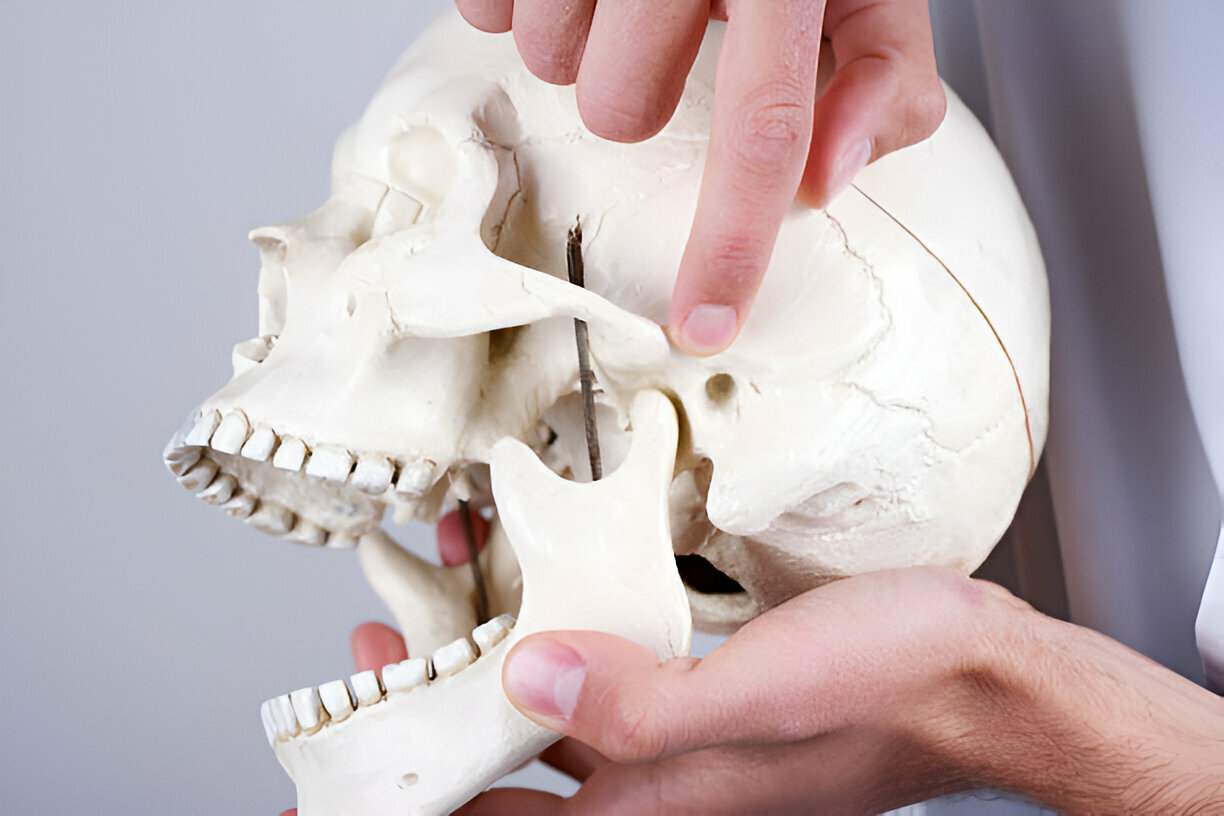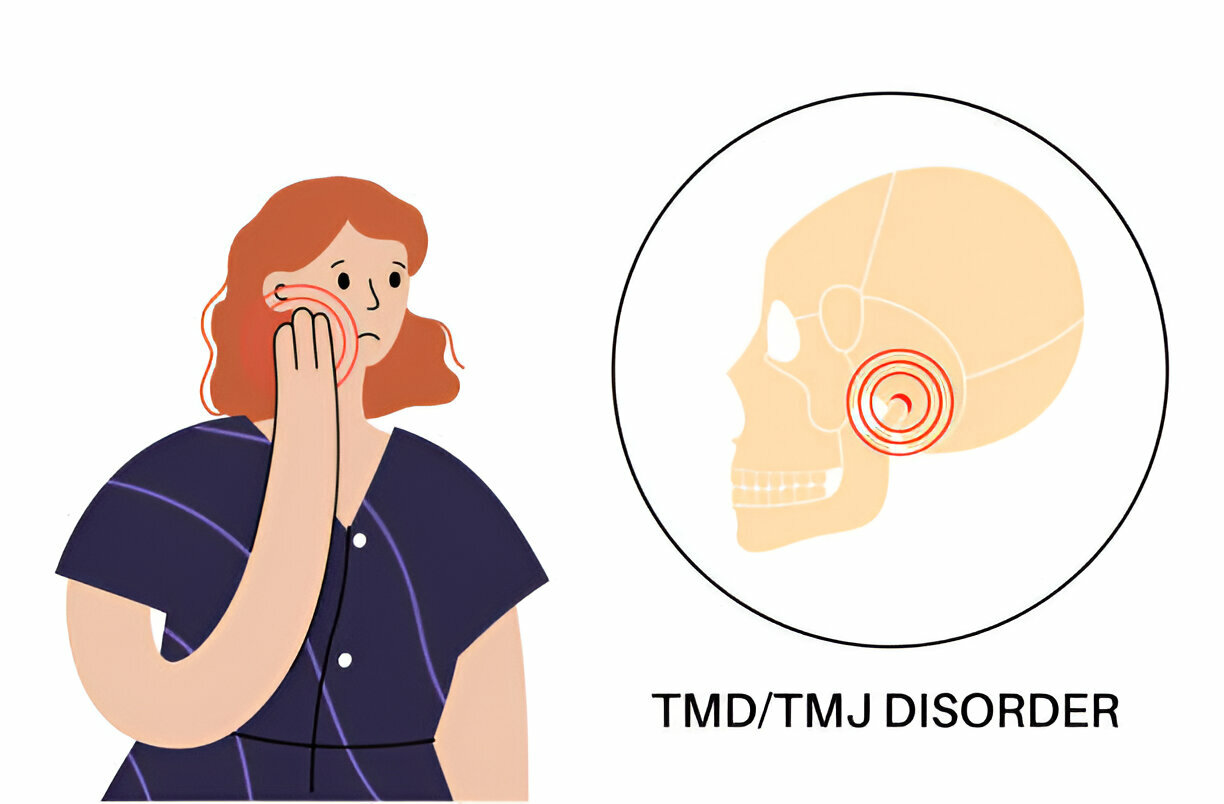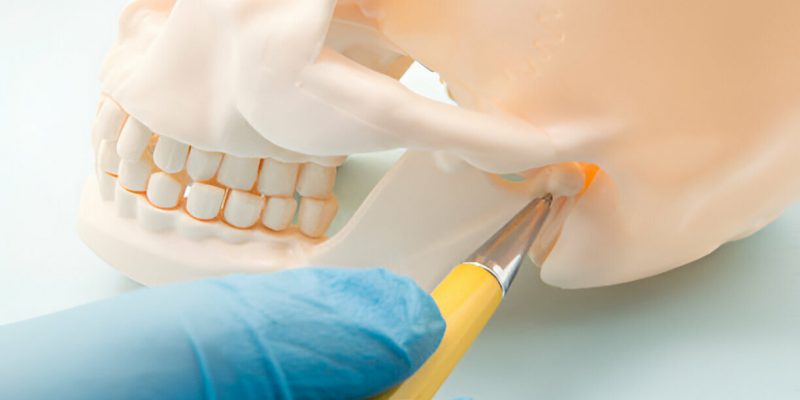Summary
Have you ever experienced pain or discomfort in your jaw or facial muscles? You might be one of the many people who suffer from TMJ or TMD (Temporomandibular Joint Disorder), a common condition that affects the jaw joints and surrounding muscles.
Sadly, 1 out of every 12 people in America suffer from the condition, resulting in acute pain, difficulty chewing, and even sleeping.
However, for a majority of individuals suffering from TMJ, most of them have no idea about the underlying oral condition. No wonder they don’t visit their nearest dentist in New Mexico until the pain escalates.

Therefore, in this blog, we take a closer look at the different options to treat TMJ via topics like:
- How to Treat TMJ – The Viable Options
- Different Treatment Options for TMD/TMJ
- Surgical Options to Treat Your TMJ/TMD
- Navigating TMJ Pain – Tips for Daily Management
Continue reading as we learn more about the oral condition in the following sections.
How to Treat TMJ – The Viable Options
Temporomandibular joint (TMJ) disorder can be a severe condition that affects a person’s ability to eat, speak, and smile. Fortunately, there are effective ways to treat TMJ that don’t always require surgery.
You can also opt for a dentist for TMJ treatment in NM or a chiropractor for adjustments to straighten the jaw and release tension in the surrounding muscles. What’s more? You can also incorporate massage treatment to ease tense muscles, lower inflammation, and improve circulation.
Different Treatment Options for TMD/TMJ
Treatment
In certain instances, the symptoms of TMJ issues may resolve naturally without therapy. However, if your symptoms persist, your doctor may prescribe a combination of treatments, sometimes more than one, to be used concurrently.
Medications
In addition to conventional nonsurgical therapies, you may undergo pharmaceutical choices to ease the discomfort associated with TMJ disorders. Here’s a list of medications to treat your TMD/TMJ:
- Pain relievers and anti-inflammatories: If over-the-counter medications don’t ease your TMJ pain, your dentist in Gallup, New Mexico, will recommend stronger medications. The list includes prescribed ibuprofen to relieve your pain for a brief period.
- Tricyclic antidepressants: Optional drugs such as amitriptyline are primarily used to treat depression. However, when consumed in small dosages, it can also be used to treat pain, bruxism, and insomnia.
- Muscle relaxants: These medications are occasionally used for a few days or weeks to reduce discomfort produced by muscle spasms in TMJ problems.
Therapies
While there are various medications and treatment options, you can also go for therapies to resolve your TMJ at the earliest. Let’s have a look at the different therapies involved in the treatment:
- Oral splints or mouth guards (occlusal appliances): Individuals suffering from TMJ/TMD are frequently suggested to wear oral splints or mouth guards. Wearing a hard or soft device placed over teeth can help individuals with jaw discomfort engage in physical activities without causing much pain.
- Physical therapy: Treatment options may include ice, moist heat, ultrasound, and jaw muscle strengthening and stretching exercises.
- Counseling: Counseling and education can assist you in identifying the situations and actions that could ease your pain. For instance, once you consult your TMJ experts, they will suggest how leaning on your chin, chewing your fingernails, and clenching or grinding your teeth can ease your pain.
Surgical Options to Treat Your TMJ/TMD
Arthrocentesis
Arthrocentesis (ahr-throe-sen-TEE-sis) is a minimally invasive treatment in which tiny needles are inserted into the joint to allow fluid flow. This process is designed to remove debris and inflammatory byproducts from your cavity.
Injections
In rare cases, corticosteroid injections into the joint may help ease your TMJ issues. However, your dentist may also inject botulinum toxin type A (Botox, others) into the chewing muscles to reduce discomfort caused by TMJ issues in other situations.

TMJ Arthroscopy
In certain circumstances, arthroscopic surgery can be just as beneficial as open-joint surgery in treating various forms of TMJ issues. This procedure introduces a short, thin tube (cannula) into the joint, followed by an arthroscope and small surgical tools. TMJ arthroscopy carries fewer risks and problems than open-joint surgery, but it does have significant limitations.
Open-joint Surgery
Your dentist or physician may suggest arthrotomy (open-joint surgery) to replace or repair the joint if your jaw pain doesn’t go away with more conservative treatments. In other instances, it may also seem related to a structural problem in the joint. Open joint surgery should only be chosen after carefully considering the Family Dentist’s benefits and drawbacks, as it has more risks than other surgeries.
Navigating TMJ Pain – Tips for Daily Management
Schedule regular checkups
If you experience sharp jaw pain, consider visiting your nearest dentist for treatment of TMJ Gallup. Your dentist will check your teeth and jaw and help you devise a treatment plan. This may involve stretching and strengthening exercises for the jaw muscles, relaxation methods, and over-the-counter or prescription pain relievers.
Practicing good habits
Apart from frequent checkups, proper oral hygiene can help you manage your TMJ pain. So make a note of any habit that may be causing your TMJ discomfort, such as clenching or grinding your teeth, and try eliminating it. One approach to do this is to practice stress-relieving practices such as yoga or meditation, as well as to limit coffee and alcohol use, both of which can reduce your TMJ pain.
Manage stress
Stress can increase TMJ discomfort; therefore, handling stress is extremely critical when it comes to managing TMJ discomfort. Additionally, avoid excessive talking and screaming since these activities might increase tension in your jaw muscles and aggravate your TMJ pain.

Protect your joints
When treating TMJ discomfort, it is critical to safeguard your jaw joint. Maintain a relaxed neck and shoulders, sit with your back straight, and avoid repetitive activities. It allows you to put additional tension on your jaw muscles. Talking for long periods or on the phone might also cause extra stress on your jaw joint. These actions may help relieve your TMJ pain.
Take care of your teeth
Maintaining good dental hygiene is crucial since it might lessen TMJ discomfort. When you maintain excellent oral health, it helps reduce TMJ discomfort. Therefore, use fluoride toothpaste, floss often, and brush twice everyday. What’s more? Try to steer clear of alcohol-containing over-the-counter oral hygiene solutions since they may irritate your jaw muscles.
Takeaway
- Temporomandibular joint (TMJ) disorder can be a severe condition that affects a person’s ability to eat, speak, and smile.
- If you experience sharp jaw pain, consider visiting your nearest dentist in TMJ Gallup.
- Apart from frequent exams, proper oral hygiene can help you manage your TMJ pain.
- Still confused about the possibilities of your jaw pain? Allow our experts at Sundance of Gallup to navigate through the treatment today!

